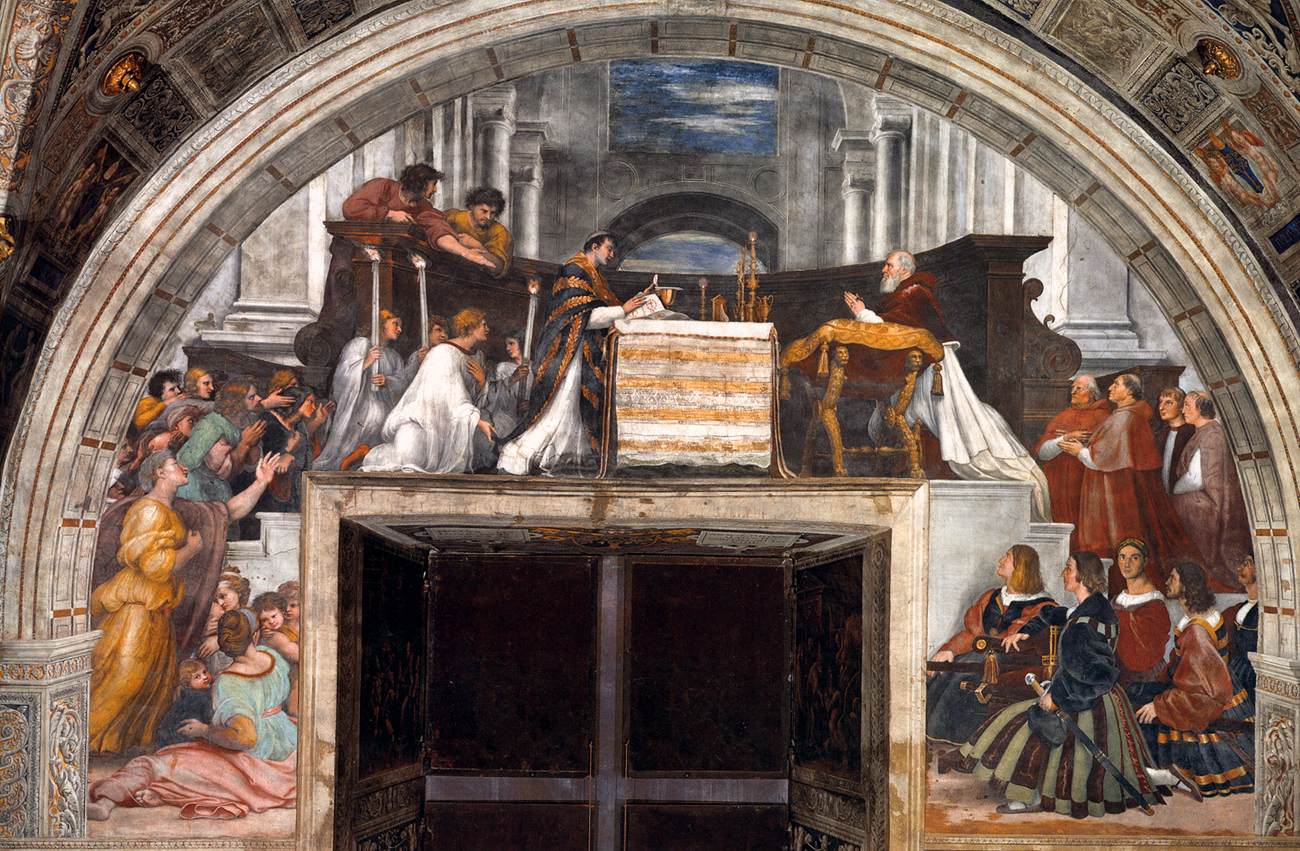The Mass at Bolsena
Story
Another exceptional event, The Mass at Bolsena is represented after the Expulsion of Heliodorus in the Stanza di Eliodoro. It is the basis of the Catholic ceremony of the Corpus Domini.
In 1263 a Bohemian priest, troubled by doubts about the doctrine of transubstantiation (the belief that the body and blood of Christ are present in the Eucharist), started out on a pilgrimage to Rome. On his way he celebrated mass at Bolsena, and during the consecration the Eucharist began, miraculously, to bleed. Each time he wiped the blood away with a cloth a cross of blood would reappear on the Host, a miracle that swept away the priest's doubts. The cloth became a venerated relic and was later kept at Orvieto Cathedral which was rebuilt (in its present form) to honour the occasion.
Raphael represents the priest, the protagonist of the event, close to the centre of the composition. As he raises the Host, two devotees lean over the semicircular screen which forms the background of the scene. This is a further attempt by Raphael to represent figures in a more dynamic way. Some critics believe he was inspired by Lorenzo Lotto, who was among the artists who had begun to paint the Stanza della Segnatura before his intervention. Pope Julius appears at the right of the scene, a symbol of ecclesiastical authority's presence during, and approval of, the miracle. The Pope's attendants stand one step below and behind him.
The asymmetry of the composition regards time as well as space: the excitement of the figures at the left represents a reaction to the supernatural event, which they witness; the stillness of the Pope and his attendants indicates their spiritual presence, achieved through a meditative evocation of the event.
